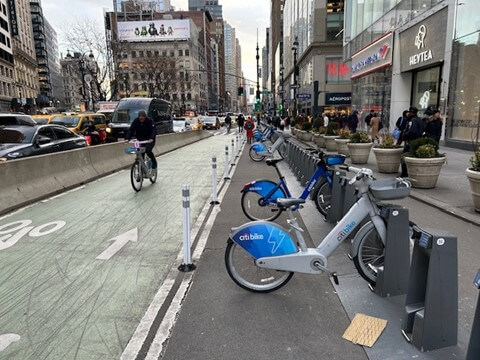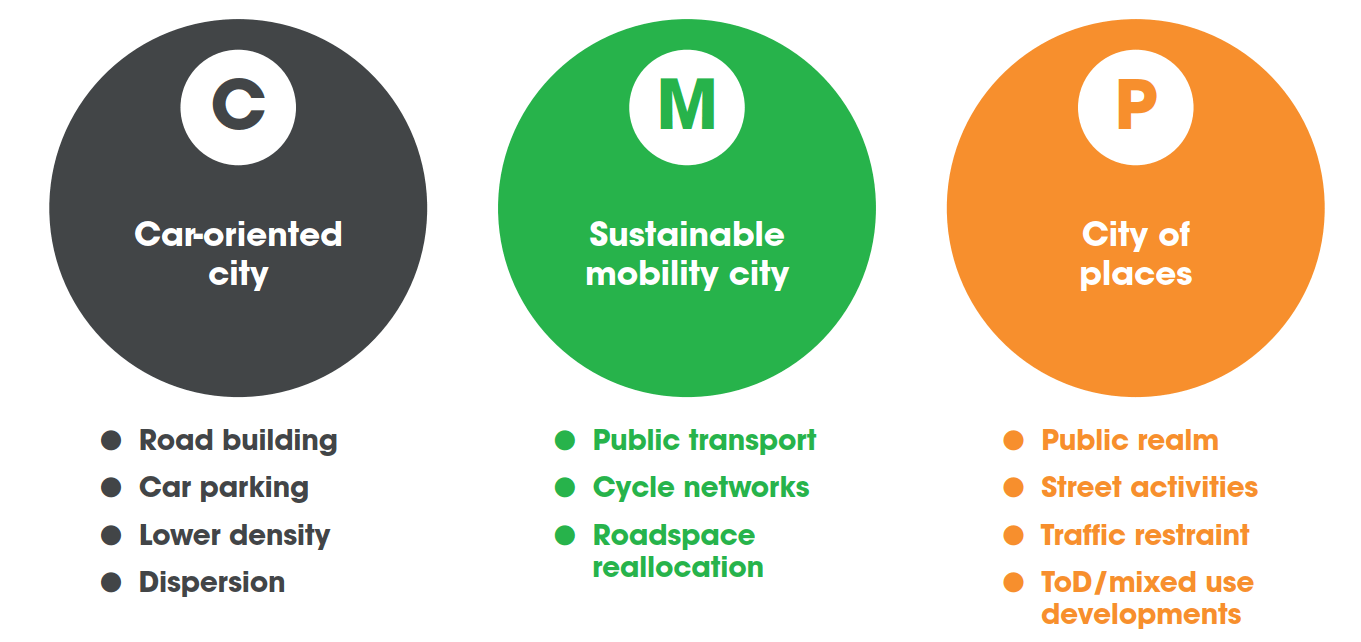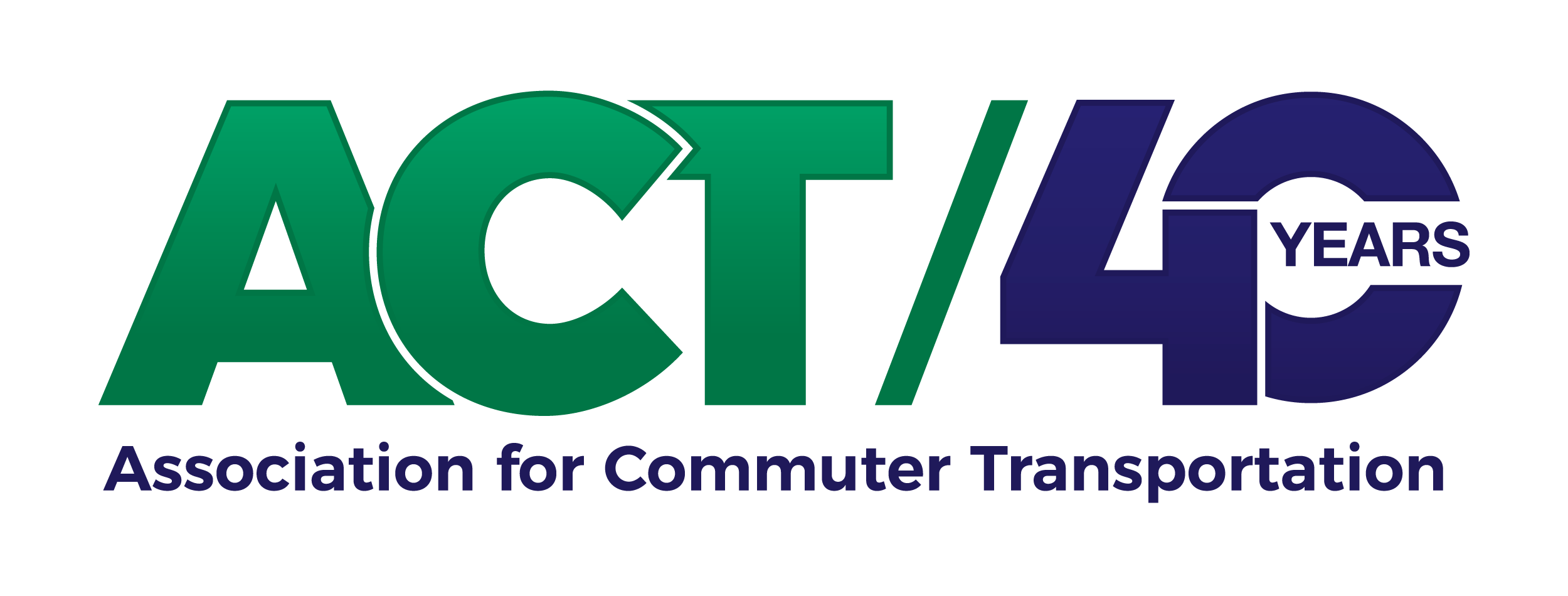Car Trip Rates Are Falling in European Cities — Will US Cities Follow?
By Paul Curtis, Director, Transport and Mobility Planning, and Ian Todreas, US Head of Sustainability Solutions at SLR Consulting
 Across the US, many communities aspire to cleaner air, reduced congestion, affordable housing, and lower CO₂ emissions. These goals often feel overwhelming, but as we heard at the 2024 TDM Forum in Charlotte, NC, some US cities are making real progress. For example:
Across the US, many communities aspire to cleaner air, reduced congestion, affordable housing, and lower CO₂ emissions. These goals often feel overwhelming, but as we heard at the 2024 TDM Forum in Charlotte, NC, some US cities are making real progress. For example:
- Denver, CO’s zoning code requires developers to submit and regularly comply with a TDM plan and eliminates minimum parking requirements, urging residents and employees to travel without a car.
- Palm Beach County, FL, is embedding transportation demand management into its regulations to reduce drive-alone rates.
- Cleveland, OH is amending zoning to promote development within walkable corridors near rapid bus service.
These efforts mirror European cities that have embraced vision-led planning over the course of several decades, which has helped them shift from car-centric planning to prioritize walking, cycling, transit use, and shared mobility. SLR’s analysis of this history as part of the EU’s CREATE project revealed three interlinked, consecutive phases of urban transport evolution:
- Car-Oriented City (1960s–70s): Focused on road building and low-density development.
- Sustainable Mobility City (1980s–90s): Introduced transit investment and car restrictions.
- City of Places (2000s–present): Reallocated street space, created low-emission zones, and prioritized people over cars.

In Europe, a mix of pressures, from the EU Air Quality Directive, which strictly limits pollution, to public health, equity, economic growth, and climate concerns exerted influence over generations of leadership that ultimately shaped the people-centered urban landscapes many European cities enjoy today.
London’s transformation is a standout example. The 2003 Congestion Charge reduced central traffic by 18%. Between 2000 and 2016, road capacity for cars dropped 30%, while daily trips (across all modes) rose from 25 million to 31 million.¹ This was thanks to the reallocation of road space to walking, cycling, and transit infrastructure. Meanwhile, car journey times remained stable, population increased, and the city experienced economic growth and improved livability. In 2019, London introduced the Ultra Low Emission Zone (ULEZ) first in central London, then beyond in 2021, and then covering the whole of Greater London in 2023. Vehicles that don’t meet ULEZ emissions standards that enter the zone are changed $17/day (except Christmas Day). The scheme has helped the Mayor of London meet his ambitions of improving air quality, with substantial reductions in NOx and PM2.5 across the city. While controversial in some circles, the Mayor was nevertheless re-elected in 2020 and then again in 2024.
Is the US evolving too?
Signs of change are emerging. In January 2025, New York City launched a congestion charge, reducing vehicle entries by 70,000 daily and improving traffic speeds. Bike infrastructure investments have boosted ridership by 64% over the past decade.
At the TDM Forum, over 150 professionals shared innovative programs aimed at shifting focus from cars to people, reflecting a strong demand for vibrant downtowns, clean air, and modern transportation options despite ongoing challenges like waning federal support and legacy car-based infrastructure. With American ingenuity, we can accelerate this evolution.
